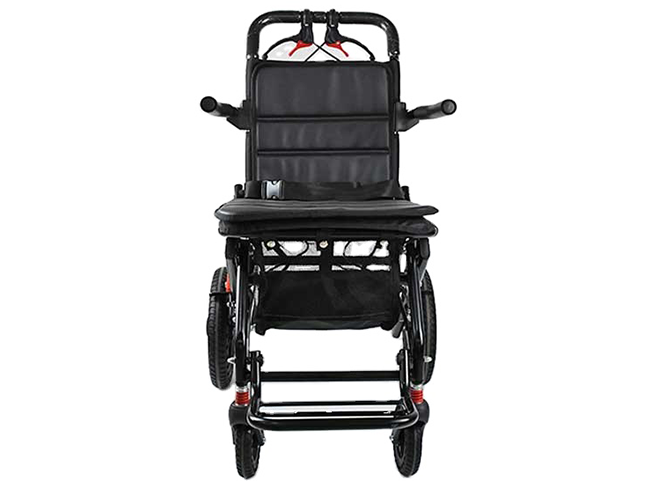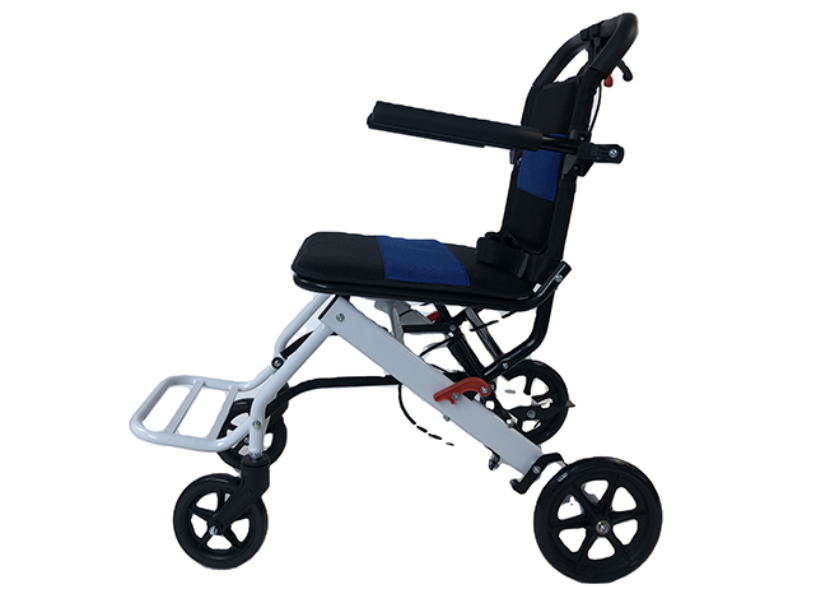How Much Does a Carbon Fiber Wheelchair Weigh Compared to Others
Time : Sep 19, 2025 View : 1,374
When picking out a wheelchair, the weight of the device is super important for how easy it is to use, carry around, and feel comfortable in. Among all the stuff used to make wheelchairs, carbon fiber stands out as a top choice because it’s super strong for how light it is. This piece will dive into the weight of a carbon fiber wheelchair, stack it up against other kinds of materials, and look at the perks and things to think about when going for a light design.

Overview of Wheelchair Materials and Their Weight Characteristics
Getting a handle on the various materials used for wheelchair frames is key to understanding why weights differ so much between models.
Common Materials Used in Wheelchair Frames
Wheelchairs are built from a mix of metals and other strong stuff. Each type has its own good points and drawbacks.
Aluminum
Aluminum is super popular for both manual and powered wheelchairs. It’s not heavy, doesn’t rust easily, and won’t break the bank. The frame, made from a tough aluminum blend, is joined together to stay light and keep rust at bay.
Steel
Steel wheelchairs are tough and cheap, but they weigh a lot more. With bold, thick carbon steel material, the frame stays solid and steady. However, they’re not great if you need something easy to move around.
Titanium
Titanium strikes a neat balance between being strong and light. It costs more than aluminum, but it handles bumps better and doesn’t rust much either.
Carbon Fiber
Carbon fiber shines as an extra-light yet super tough material. It’s often picked for top-notch wheelchairs made for active folks or sports players. The main frame is crafted from pure carbon fiber.
Weight Ranges Based on Material Type
-
Steel: 20–25 kg
-
Aluminum: 13–18 kg
-
Titanium: 10–14 kg
-
Carbon Fiber: 6–15 kg based on the model and added parts
Features and Benefits of Carbon Fiber in Wheelchair Design
Carbon fiber wheelchairs bring a bunch of pluses, not just their low weight.
Lightweight Properties of Carbon Fiber
The biggest win is how much lighter they are. For example, a net weight of 15kg for models like XY-D02L makes them a breeze to lift into a car or move over bumps in the road.
Durability and Structural Strength
Even though it’s light, carbon fiber holds up really well. It doesn’t bend or break under pressure, so it offers steady support even after lots of use.
Aesthetic and Ergonomic Advantages
These wheelchairs often look sharp and modern. They come with handy features like seats you can adjust, cushions that let air through, and wheels that soak up shocks. The front and back honeycomb wheels that absorb bumps make every ride smoother.
Comparing the Weight of Carbon Fiber Wheelchairs with Other Types
Knowing how carbon fiber stacks up against other materials helps folks pick the right one for their daily needs.
Average Weight of Carbon Fiber Wheelchairs
Most carbon fiber wheelchairs tip the scales at 6–15 kg, depending on how they’re set up. A net weight of 15kg is common for electric versions like the XY-D02L Pure Carbon Fiber wheelchair.
How Aluminum Wheelchairs Compare in Weight
Aluminum models are heavier than carbon fiber but still lighter than steel. For instance, using aluminum alloy with a carbon transfer process, a double-charge lithium battery, and a one-key folding frame makes it simple to load into a car while keeping things functional.
Titanium vs. Carbon Fiber: A Comparative Look
Titanium frames often weigh a bit more than carbon fiber. They bend under stress without staying bent, though. But titanium usually costs more without saving much extra weight compared to carbon fiber.

Steel Frame Wheelchairs and Their Heavier Build
Steel is the heaviest of the bunch. Even though it’s sturdy and cheap, with bold, thick carbon steel material making the frame firm and stable, it’s not the best for regular trips or active folks because it’s so bulky.
Factors That Influence the Overall Weight of a Wheelchair
Besides the frame material, a few other design bits can change how much a wheelchair weighs.
Frame Design and Engineering Choices
Things like folding parts, stronger joints, or built-in motors can make it heavier or lighter. It depends on what the makers focus on. A one-key quick folding feature lets you open or close it fast, showing smart design that keeps extra weight low while making it handy.
Type of Wheels and Tires
The size of the wheels matters for both how it works and how much it weighs. PU honeycomb wheels strike a good balance between being tough and light. The front wheel, at 8 inches, and the rear wheel, at 12 inches, both made of PU honeycomb, help make rides smoother without adding extra bulk.
Seat Material and Accessories
Thicker seat cushions feel nicer but might add a tiny bit of weight. A thick seat cushion keeps you comfy even after sitting for hours, using clever picks like Oxford cloth to stay light.
Customization Options and Add-ons
Extras like power motors or bigger batteries bump up the weight but make it more useful. For example, an optional 20AH lithium battery lets you go 15-25 km, though it adds a few more grams to carry.
Performance Implications of a Lighter Wheelchair
Going for a lighter wheelchair can really change how good life feels for users, no matter their mobility level.
Ease of Transport and Portability
Light models are simpler to fold and lift into a car. They’re perfect for people who travel a lot or live on their own. You can easily load them onto vehicles, making them great for trips.
Impact on User Mobility and Fatigue
Less weight means less effort to push or move around inside. This is a big help over long times or on rough ground. You won’t get as tired so quickly.
Suitability for Active Users or Athletes
For folks into sports or who move a lot, a lighter frame means better speed, quick turns, and awesome performance in stuff like basketball or racing.
Considerations When Choosing a Lightweight Wheelchair
Light options have tons of benefits, but there are real things to think over before buying one.
User Lifestyle and Mobility Needs
Someone who’s always on the go might want speed over extra comfort. But if you sit for long hours, you might like more padding, even if it adds a little weight.
Budget Constraints vs. Material Benefits
Carbon fiber gives amazing results, but it costs more than aluminum or steel. This is a big deal when planning how much to spend on mobility gear.
Maintenance Requirements Based on Material
Carbon fiber doesn’t need fixing often since it doesn’t rust. But if it breaks, repairs can be tricky compared to metal frames, which are easier to fix or reshape.
Introducing Xunyu Medical as a Trusted Mobility Equipment Supplier
Xunyu Medical has tons of know-how in creating top-quality mobility tools that fit all kinds of user needs.
Company Background and Industry Experience
With years of work in making medical gear that helps people stay independent, Xunyu Medical is a top name in the field. They’re all about bringing new ideas to mobility aids.

Product Range: Bedside Handrails, Crutches, Wheelchairs, Bath Chairs, Walking Aids
Their lineup includes bedside handrails for home safety, crutches, both electric and manual wheelchairs made from aluminum alloy or pure carbon fiber, bath chairs, and walking aids. All are built with comfort and support in mind for daily tasks.
Commitment to Quality, Innovation, and Customer Support
Xunyu Medical focuses on cutting-edge making methods like carbon transfer printing. They also offer great customer help, ensuring every item looks good, works well, and gives peace of mind after you buy it.
Summary of Key Comparisons Between Carbon Fiber and Other Materials
When looking at wheelchair materials, here’s the breakdown:
-
Weight: Carbon fiber (6–15 kg) beats aluminum (13–18 kg), titanium (10–14 kg), and steel (20+ kg) for lightness.
-
Durability: All are pretty tough, but carbon fiber shows less wear over time.
-
Cost: Steel is the cheapest, while titanium and carbon fiber cost more.
-
Use Case: Pick based on how you live—carbon fiber is best for active folks, while steel works for tight budgets and less movement.
FAQs:
Q1: What is the average weight of a carbon fiber wheelchair?
A: They usually weigh between 6 kg and 15 kg, depending on how they’re made. For example, a net weight of 15kg is standard for electric models like XY-D02L Pure Carbon Fiber from Xunyu Medical. Even with motor parts, it stays super easy to carry thanks to its ultralight build.
Q2: Are carbon fiber wheelchairs suitable for everyday use?
A: Totally! They don’t need much upkeep and are really tough. That makes them awesome for daily trips, whether inside or outside. They’re especially handy for stuff like getting on buses or loading into cars. The one-key quick folding function makes loading onto vehicles a snap, adding to their usefulness.
Q3: How does the cost of carbon fiber compare with other wheelchair materials?
A: Carbon fiber often has a higher price at first because of fancy making processes. But it saves money over time with less fixing needed and better handling. This is a huge plus if you’re always moving around on different kinds of ground.


